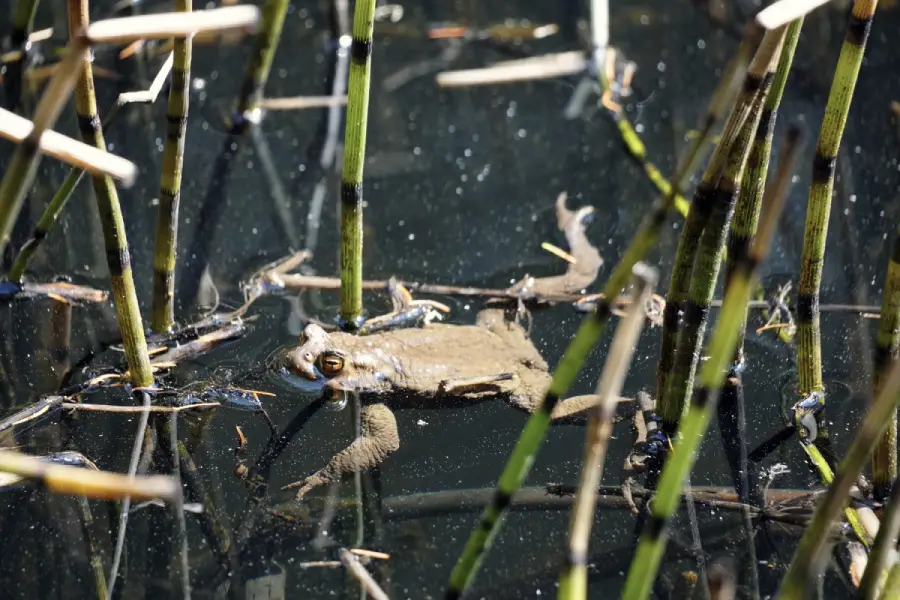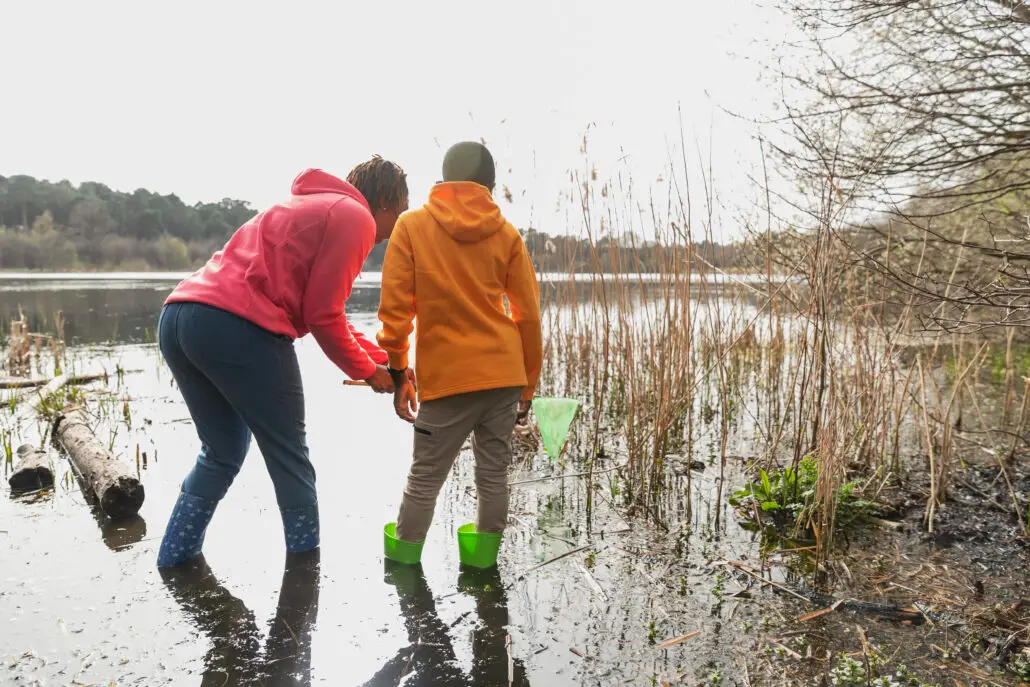Wetlands are some of the most valuable ecosystems on Earth, acting as natural filters, flood buffers, and wildlife habitats. Yet over the past century, many wetlands have been drained, filled, or degraded by human activity. To reverse these impacts, scientists and engineers use wetland restoration, a process designed to return wetlands to their natural form and function.
Understanding what is wetland restoration is essential for landowners, developers, and policymakers who must balance environmental protection with economic growth. Restoring wetlands not only safeguards biodiversity but also provides long-term ecological and social benefits, from cleaner water to increased climate resilience.
What Is Wetland Restoration?
A wetland restoration project aims to repair damaged or degraded wetlands so they can once again function as healthy ecosystems. Restoration seeks to bring back natural hydrology, vegetation, and habitat conditions that support both wildlife and human communities.
Closely related is the concept of wetland reclamation, which often refers to converting disturbed land—such as mined areas or drained agricultural fields—back into wetlands. While reclamation and restoration share similar goals, reclamation typically starts with land that has been fundamentally altered, whereas restoration may focus on wetlands that are degraded but still partially functioning.
For regulatory compliance, these efforts are often tied to wetland delineation, which defines the legal boundaries of wetlands before restoration or mitigation begins.

Goals and Benefits of Restoring Degraded Wetlands
The primary goals of wetland restoration include:
- Reestablishing ecological functions such as water filtration, nutrient cycling, and carbon storage.
- Enhancing biodiversity by providing habitats for birds, fish, amphibians, and plants.
- Improving water quality by trapping sediments and pollutants.
- Reducing flood risks by storing stormwater and slowing runoff.
- Supporting climate resilience through carbon sequestration and shoreline stabilization.
Beyond ecological gains, restored wetlands provide economic and social benefits: reduced disaster recovery costs, recreational opportunities, and improved community health. These benefits align with larger ecosystem restoration strategies worldwide.
Implications of Wetland Degradation
When wetlands are destroyed or degraded, the consequences ripple through entire ecosystems and societies:
- Biodiversity loss: Fish, amphibians, migratory birds, and pollinators all depend on wetland habitats. Their decline weakens food webs and threatens species survival.
- Increased flooding: Wetlands act like natural sponges, storing water during storms. Without them, floodwaters rise faster and cause more damage to communities.
- Poorer water quality: Sediments, fertilizers, and industrial pollutants flow unchecked into rivers and lakes, leading to harmful algal blooms and drinking water challenges.
- Climate change impacts: Drained wetlands release stored carbon, becoming sources of greenhouse gases instead of carbon sinks.
- Cultural and recreational losses: Wetlands have long supported Indigenous practices, local economies, and outdoor recreation. Their disappearance erodes these traditions and opportunities.
These impacts highlight why wetland restoration is closely tied to broader practices in environmental engineering and sustainable development.
Approaches and Techniques for Restoration
Restoring wetlands requires strategies tailored to local site conditions and project goals. Successful projects often combine all three strategies, ensuring wetlands regain resilience and require less human intervention over time. Common wetland restoration techniques include:
Restoring Hydrology
- Removing dikes, levees, or drainage tiles to allow natural flooding.
- Reconnecting rivers to floodplains so water can spread across wetlands during high flow.
- Installing adjustable water control structures to mimic seasonal water fluctuations.
Reestablishing Vegetation and Habitat
- Planting native grasses, sedges, and trees that stabilize soils and provide food and shelter for wildlife.
- Using seed banks or nursery-grown plants to reintroduce lost species.
- Designing habitat features like shallow pools, riffles, or meanders to create diverse ecological niches.
Managing Invasive Species and Pollutants
- Mechanical or chemical removal of invasive plants such as phragmites and purple loosestrife.
- Soil remediation in areas contaminated by heavy metals or industrial waste.
- Buffer zones and stormwater controls to reduce nutrient runoff from agriculture and urban development.
Monitoring and Assessment
Wetland restoration does not end when the last plant is placed or the final water channel is cut. Long-term monitoring and assessment are vital to measure ecological success.
Key indicators include water levels, vegetation health, wildlife presence, and water quality. Many projects borrow adaptive monitoring practices from environmental site assessments to measure long-term success.
- Hydrologic conditions: Are water levels behaving as expected?
- Vegetation: Are native species thriving while invasives are controlled?
- Wildlife: Are birds, fish, and amphibians using the habitat?
- Water quality: Are nutrients and sediments being filtered effectively?
Adaptive management allows teams to make adjustments when monitoring reveals gaps, ensuring wetlands continue to recover and function as intended.

Policy and Regulatory Drivers of Wetland Restoration
Many wetland restoration efforts are not optional, they are tied to regulatory compliance. Under the Clean Water Act, developers may be required to restore or create wetlands as part of mitigation for impacts. Similarly, state and local governments often mandate wetland restoration to balance land development with conservation.
Agencies such as the U.S. Army Corps of Engineers, U.S. Fish and Wildlife Service, and local environmental departments frequently oversee permitting and compliance, making restoration a critical part of both environmental policy and project approval.
Case Studies and Success Stories
Examples of wetland restoration can be found across the United States:
- Florida Everglades: Large-scale hydrologic restoration aims to bring back natural flows, supporting endangered species and improving water quality.
- Prairie Pothole Region (Midwest): Restored wetlands help migratory waterfowl populations recover while storing carbon in soil.
- Chesapeake Bay Watershed: Targeted restoration reduces nutrient pollution and improves estuarine health.
These case studies reflect how restoration contributes not only to ecosystems but also to civil engineering’s role in sustainability.
Conclusion
So, what is wetland restoration? It is the practice of repairing degraded wetlands so they can once again provide vital ecological services. Whether through restoring hydrology, replanting native vegetation, or managing invasive species, restoration projects ensure wetlands continue to filter water, reduce floods, and support biodiversity.
The related concept of wetland reclamation extends these efforts to lands that were once wetlands but have been heavily altered. Together, restoration and reclamation safeguard natural resources while meeting regulatory requirements and supporting sustainable development.
As climate change and land-use pressures increase, wetland restoration will remain one of the most effective strategies for balancing human needs with ecosystem health.
